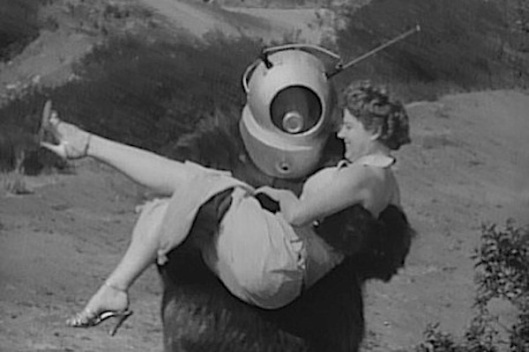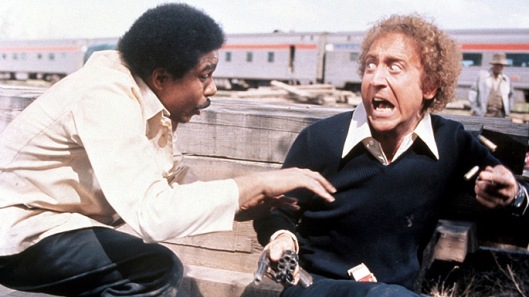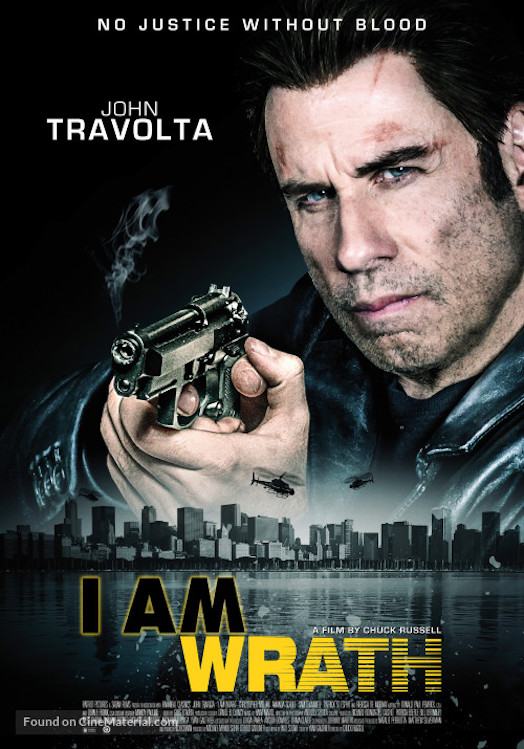Having successfully made the transition from actor to A-list director, Ron Howard has retained his populist focus ever since he made his first short movie, Old Paint, back in 1969. He’s also a director who moves from genre to genre, and while some of his detractors insist he doesn’t imprint his own particular stamp on any of them, he still has a recognisable style that’s all his own, whether it’s ramping up the tension as the Apollo 13 crew try to solve the problem of getting back home from the Moon, examining the life and times of one of Britain’s most iconic racing drivers, or indulging in some light-hearted fantasy romance involving a mermaid. In each of these there’s a subtle understanding that Howard takes it all very seriously but at the same time is having fun putting it all together, like a kid in a candy store who can pick anything he wants. He’s not the edgiest, or grittiest of directors, and sometimes the subject matter isn’t always a good match for his strengths (e.g. In the Heart of the Sea), but he isn’t afraid to take risks, and when he does connect with the right material, the effect can be breathtaking. Here then are his ten most successful movies at the international box office, and evidence (if it were needed), that you don’t have this much success unless you’re getting it right more times than not.
NOTE: As always, box office figures are all thanks to the good folks at boxofficemojo.com.
10 – Cinderella Man (2005) – $108,539,911
Howard’s biopic of the boxer James Braddock – apparently washed-up but with one last championship fight left in him – Cinderella Man reunites the director with Russell Crowe and makes the Depression-era Thirties as much of a character as any of the people depicted. It’s a powerful piece about pride and redemption, and of all the movies on this list is probably Howard’s most underrated project. A towering achievement, and in terms of recreating an age where people had to fight for so many things, including the right to a basic life, Braddock’s tale is a salutary lesson in self-belief and how not to give up.

9 – Parenthood (1989) – $126,297,830
Howard has always been able to assemble great casts for his movies, and Parenthood is no exception. A comic ramble through the ups and downs of, yes, parenthood, Howard deftly explores the stresses and strains, and quiet heroics, that make up being a parent, and along the way keeps things grounded yet heartfelt. It’s a small, unassuming masterpiece of a movie, with terrific performances from Steve Martin and Dianne Weist, and features early turns from Keanu Reeves and Joaquin Phoenix (back when he was known as Leaf Phoenix). And as Jason Robards’ character so aptly puts it, parenting is “like your Aunt Edna’s ass. It goes on forever and it’s just as frightening.”
8 – Far and Away (1992) – $137,783,840
Tom Cruise and Nicole Kidman in a romantic drama set against the backdrop of the Irish famine – what could possibly go wrong? Critics were quick to answer, and while it’s true that Far and Away isn’t the best example of Howard’s work in this list (it lacks passion and sincerity, and never engages the audience as powerfully as it should), it still retains a certain flavour that helps overcome the movie’s soap opera narrative and the overly romanticized nature of much of the material. Howard plays up the central relationship but is hampered by (then married couple) Cruise and Kidman’s lack of chemistry, leaving him adrift in a way that wouldn’t happen again until In the Heart of the Sea.
7 – Backdraft (1991) – $152,368,585
In between Parenthood and Far and Away, Howard made this testosterone-fuelled homage to US firefighters, and in the process made a movie that easily fits the term “guilty pleasure”. A certain amount of romanticism is involved (witness Kurt Russell tackling raging infernos without a helmet or breathing apparatus), and it’s allied to a mystery concerning a string of arson attacks, but the movie scores highly when it puts its willing cast in amongst the flames, and when Howard dials back the heroics to examine just what it is that drives these men on in such dangerous circumstances. Nascent star William Baldwin has never been better, but he’s still overshadowed by the likes of Scott Glenn, Robert De Niro, J.T. Walsh, and Donald Sutherland as Backdraft‘s very own version of Hannibal Lecter (“Burn it all”).

6 – Ransom (1996) – $309,492,681
A cynical yet memorable thriller with stellar turns from Mel Gibson and Gary Sinise, Ransom sees Howard apply tension by the bucket load as he charts the response by Gibson’s mega-rich businessman to the kidnapping of his son. Howard pulls out all the stops, making the movie an often heart-stopping experience, and it’s a shame that he’s not found another project to bring out the same qualities he displays here. Helped immeasurably by his star’s commitment, the former Richie Cunningham dispels any idea that he can’t do “edgy” when the material requires it, making this one of the rare occasions in his career when Howard has actively refuted his critics.
5 – A Beautiful Mind (2001) – $313,542,341
The true story of asocial mathematician John Nash, A Brilliant Mind brought Howard and Russell Crowe together for the first time, and earned Oscars for both of them. A meticulous, solidly grounded exercise that explores with creativity and sensitivity the mind of a schizophrenic genius, the movie is far more audacious than perhaps even its supporters are aware, and its place in the list shows just how successfully Howard’s approach to the material scored a hit with, and resonated with, audiences around the world. A strong contender for the title of Howard’s best movie, and a testament to the notion that there are no stories – true or otherwise – that can’t be made if a director is confident enough to trust in the material (in this case, Akiva Goldsman’s succinct and sympathetic screenplay).
4 – How the Grinch Stole Christmas (2000) – $345,141,403
A rare foray into fantasy for Howard, and twelve years after the disappointment that was Willow. Adapting Dr Suess for a live action big screen outing may have seemed foolhardy at the time, but Howard enters into the spirit of things and makes the movie one giant confection to be enjoyed over and over again. With the inspired casting of Jim Carrey as the Grinch, and the good doctor’s off-kilter sensibility given free rein, Howard is free to indulge himself as much as the audience, and the result is a movie that sees him having fun with the garish environs of Whoville, the innate pomposity of the Whovian “intelligentsia”, and the waspish barbs uttered by the Grinch. A joy from start to finish.

3 – Apollo 13 (1995) – $355,237,933
Howard has always had a healthy attraction for true stories of courage, but he excelled himself with this gripping, incredibly well mounted account of the crew of Apollo 13’s attempt to get back home after their mission suffers from setback after setback after setback. Howard is aided by a string of impressive performances, from Tom Hanks, Kevin Bacon and Bill Paxton as the beleaguered astronauts, to Ed Harris’s no-nonsense mission controller, and all the way down the cast list to people such as Kathleen Quinlan, and good luck charm Clint Howard. But it’s the verisimilitude achieved by Howard and his design team that registers the most, making Apollo 13 entirely credible and helping to make the astronauts’ predicament as taut as possible. Even if you know the outcome, Howard’s ability as a director will still keep you guessing if they actually get home – and that’s no small feat.
2 – Angels & Demons (2009) – $485,930,816
This and Howard’s most successful movie probably won’t be any surprise but what can’t be denied is that having a built-in audience is half the battle won. Reteaming with Hanks for what is actually a prequel to The Da Vinci Code, Howard retains the faithful adaptation approach he took with Dan Jones’ first outing for symbologist Robert Langdon, but still can’t do anything to combat the problems inherent in Jones’ wayward tale of corruption and murder within the Vatican. As a result, this seems more like Howard taking a back seat to the material and getting on board solely as a director for hire, rather than as an instigator.
1 – The Da Vinci Code (2006) – $758,239,851
The fan base was there, and a big screen adaptation was always going to happen, but of all the directors to take up the challenge of making Dan Jones’ literary behemoth, Howard probably wasn’t anyone’s first choice. Nevertheless, he does the best he can to replicate the pace and urgency of the novel, and elicits another committed performance from Hanks, but is hampered at every turn by the absurdities of Jones’s story; so much so that the book’s big revelation is a tepid affair at best, and risible at worst. But this was always going to be a success, and if you’re going to be attached to the movie version of a global phenomenon, that’s still no bad thing for your reputation. With third adaptation Inferno due to hit screens later this year, it’ll be interesting to see where it will fit into this list in a year’s time, though it’s unlikely to topple this first outing.








































































































